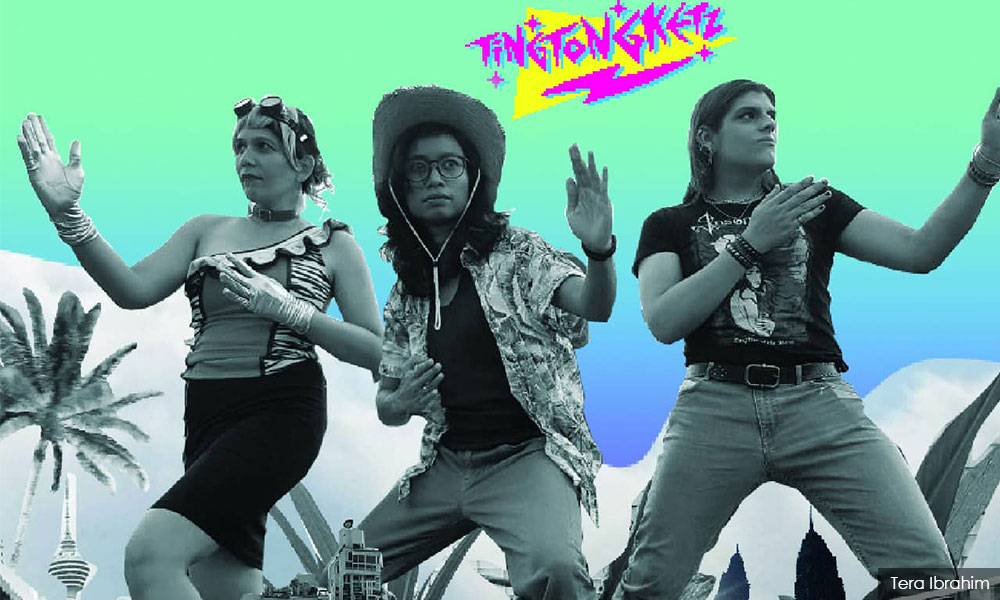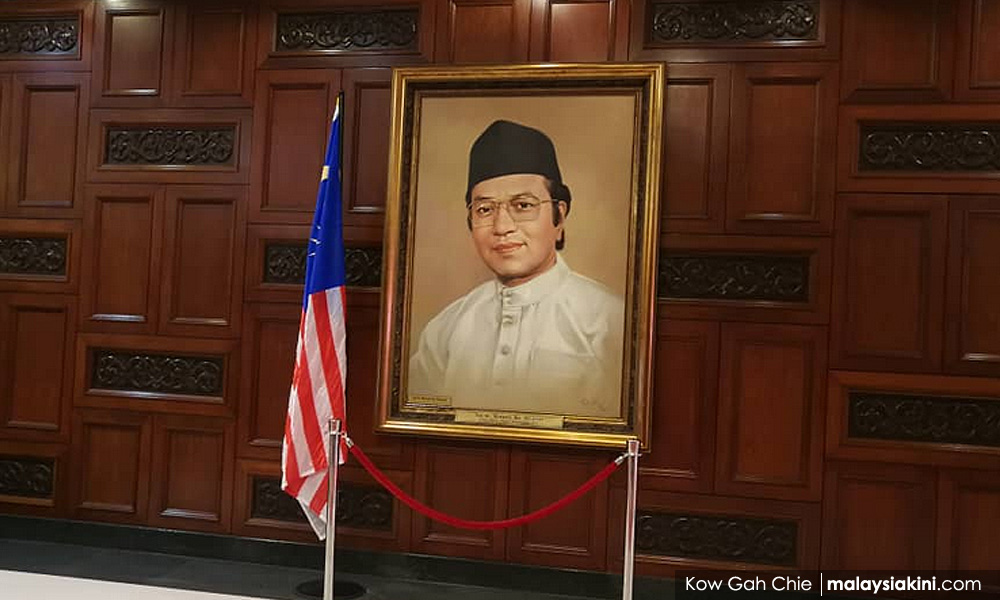
FEATURE | For many decades, government officials have trotted out the party line that Lesbian, Gay, Bisexual, Transgender (LGBT) rights are 'Western' and not 'Asian' values.
A couple of weeks ago, the Centre for Human Rights Research and Advocacy (Centhra) released a statement saying that LGBT rights are "foreign Western imports that are alien to Malaysia".
But the historical record suggests the opposite. Southeast Asia has a rich history of gender and sexual diversity, one that was eventually erased largely due to Western colonialism.
As early as the 15th century, there are records of Malay androgynous priests, or sida-sida, who served in the palaces of sultans in Negeri Sembilan, Kelantan and Johor, among others.
The sida-sida were typically "male-bodied priests or courtiers" who undertook "androgynous behaviour", such as wearing women’s clothes, and likely "engaged in sexual relationships with individuals of the same sex" or "both sexes".
They resided in the inner chambers and were tasked with safeguarding women, to ensure the food and clothing of royalty were not tampered with by humans or spirits, and to oversee ritual protocol.
The sida-sida essentially guarded the palace’s physical and spiritual 'boundaries' between mortals and divinity.
Shika Corona, a trans woman who plays in a queercore, KL-based band Tingtongketz, recalls hearing of an elderly trans woman who used to work in such a palace before she passed away.

"I feel very proud that we’ve been around for so long in Malaysia," Shika said.
"Generally people here do not know who the sida-sida are. Since the 1980s, the media has been trying to say that trans women are something new… that LGBT is a Western thing."
In Borneo, both the Ngaju Dayak and the Iban have rich traditions dating until the mid-20th Century of the basir and manang bali, who were typically male-bodied individuals who adopted feminine dress and demeanour, and who took normatively gendered males as their husbands.
Both the basir and manang bali were mediators and held roles of great ritual importance among the Iban. The manang bali were typically wealthy village chiefs known for their healing arts.
Early Iban society was not known for its gender non-conformity, yet people made an exception for the manang bali because they recognised their religious calling and the gifts and talents that they offered.
As Joseph Goh, a Malaysian queer theologian who writes on the manang bali, asks: “What would happen, I wonder, if present-day Malaysians, of all gender and sexual persuasions, courageously took a leaf out of the history book of the Ibans, and learned ways of living together in mutual respect and appreciation in the midst of persistent and irreconcilable differences?”
These gender-bending ritualistic roles were a function of age-old indigenous belief systems, that took on Hindu/Buddhist inflections, which portrayed the gods as androgynous or made up of male-female pairs.
Given this view of divinity, people who embodied both masculinity and femininity in their gender and/or sexuality were believed to be closer to the divine and uniquely capable of mediating between the spirits and humans.
Some believe that the Indian hijra – considered a third sex – whose origins are closely tied to Hindu mythology, is a figure that parallels or echoes the sida-sida.
Southeast Asian heritage
Acceptance of gender and sexual diversity is part of not just Malaysia’s indigenous history, but that of Southeast Asia at large.
How did Islam relate to this gender-bending ritualistic tradition? For many centuries, Islam was known in the region for its syncretism and integration with indigenous, even queer practices.
In the 1980s, the government offered gender-confirmation surgeries – the only other country in Southeast Asia to offer the surgery, aside from Thailand.
Trans health was so widely embraced that even the government contributed funds towards the Mak Nyah Association.
Many attribute the decline of “queer acceptance” within Islam to the global rise of reformist movements – such as Wahhabism and Salafism – in the 1980s.
These movements, formed largely as a response to Western hegemonies, established schools of learning in Saudi Arabia and other countries where many Southeast Asian Muslims were sent to study.
They returned home with a desire to reform Islam and purify it of all syncretic and superstitious traditions, such as the roles of sida-sida.
But not many know that it was the British who consolidated and expanded syariah law in Southeast Asia in their quest to bureaucratise and legally regulate public life.
In fact, the five Islamic countries with no anti-homosexual laws are those that were never colonised by the British.
Today, more than half of Southeast Asian countries – including Malaysia, Brunei, Singapore, and Myanmar – that legally prohibit sodomy do so based on laws created by the colonial British in the early 1900s.
British officials were driven to police sexual behaviour, not just out of a desire to Christianise indigenous customs, but also out of fear that its all-men military camps would turn into “replicas of Sodom and Gomorrah,” as soldiers may be tempted by “special Oriental vices,” such as sodomy.
"I feel for a long time we've been cheated by the West to think that the West brought liberation to women and gays, when in fact it was the West that brought homophobia to Southeast Asia," says N, a 32-year-old Malay lesbian.
"Our own histories are filled with so much sexual and gender diversity."
Growing up in a Wahhabist Islamic school, N only came to learn about different, LGBT-friendly interpretations of Islam while in university.
She read about an Islamic boarding school for trans women in Yogyakarta (which has since been shut down, after coming under fire), and discovered Siti Musdah Muliah, a feminist scholar who argues that Islam accepts homosexuality.
Later on, she learned about the sida-sida and manang bali through a friend.

Like N, Joshua Chun Wah Kam (photo) was born into an upper-middle-class family in Kuala Lumpur.
He grew up in a Christian, home-schooled environment where he learned sexual education through curricula from Christian American organisations, such as Focus on the Family.
After they found out he was gay, Chun's parents enrolled him, a teenager then, in Christian ex-gay therapy, which was run by the organisation Pursuing Liberty Under Christ (PLUC).
He watched gay films when his mother wasn't around, but they all featured skinny, white characters living in Australia or America.
"All knowledge of LGBT-ness I had was mediated through whiteness. I had no understanding of what it was like to fall for an Asian dude," he said.
As Chun grew older, he became curious if he had any "gay ancestors" (his family traces their lineage back to Fujian).
It was then he discovered Tu'er Shen, a historical Fujianese 'rabbit god' who was worshipped as the patron deity of male homosexuality, as Fujian was a province historically known for male homosexuality.
"What gives me fuel to keep on is the knowledge that I’ve had ancestors who lived wonderful gay lives in Fujian… I feel this weight behind my back, the weight of ancestry," he said.
The queer ancestry of Malaysians is certainly not entirely lost – there are still many threads of community. Mak nyah and lelaki lembut are disproportionately represented in the entertainment and beauty industries, even achieving public stardom, so long as they maintain a level of discretion.
Some maintain a particular ritual role as the mak andam, who plan weddings and beautify brides and who act, in a way, as mediators between brides and grooms. The role of the mak andam is a longstanding tradition that likely has its origins in the ritualistic roles of the sida-sida.
Especially in more rural, less Westernised areas, there is a deeply embedded, even if sometimes limited, familiarity and acceptance of gender and sexual non-conformity.
No perfect blueprint
Nevertheless, Malaysia's history of gender and sexual diversity should not be taken as a perfect blueprint for the present. Historically, 'same-sex' relationships involved hetero-gender pairs: a masculine and feminine person.
A 'masculine' man attracted to other 'masculine' men would be unheard of, and vice versa for women. Indeed, the invisibility of feminine lesbians is something that N, who does not identify herself as a 'masculine' pengkid, struggles to combat.
Still, the queer history of Malaysia is worth reconnecting with, not just to counter the empty allegations that queerness is a Western invention, but to find inspiration for ways of being queer that is uniquely Asian.
The Centhra statement last week contrasted "LGBT rights" with "Asian values", that is, "individualism" as opposed to "community and responsibility."
The implication is that LGBT identity is ultimately an individualistic identity that disrupts the “peace and cohesiveness of society."
It is a trope that goes back to Prime Minister Dr Mahathir Mohamad’s writings in the 1990s about communal "Asian values" versus individualistic "Western values."
But Malaysia's queer history does not fit neatly into this individual vs communal binary.
For the sida-sida and manang bali, their gender and sexuality were inseparable from the communal and religious roles that they played.
The manang bali, for instance, were often village chiefs who were responsible for mediating conflicts and communing with the spirits for the prosperity of the villages.
If they failed their ritual obligations, they would be held responsible for natural calamities. They held these roles because of, not in spite of, their gender and sexuality.
It may be more accurate to use the language of 'roles' as opposed to 'identities', and 'communal obligation' instead of 'individual desire', to properly capture who they were.
One cannot understand the sida-sida and manang bali individually, apart from their context.
In other words: is this not the essence of 'Asian values'?
MAYANG AL-MOHDHAR, a Malaysian writer, contributed writing to this article.
SARAH NGU, who was born in Sarawak, is a freelance writer based in Brooklyn. Her works have been published in the South China Morning Post, Jacobin, Sojourners and aired over Public Radio International. Follow her on Twitter at @sarahngu and contact her through sarahngu.com. - Mkini




No comments:
Post a Comment
Note: Only a member of this blog may post a comment.